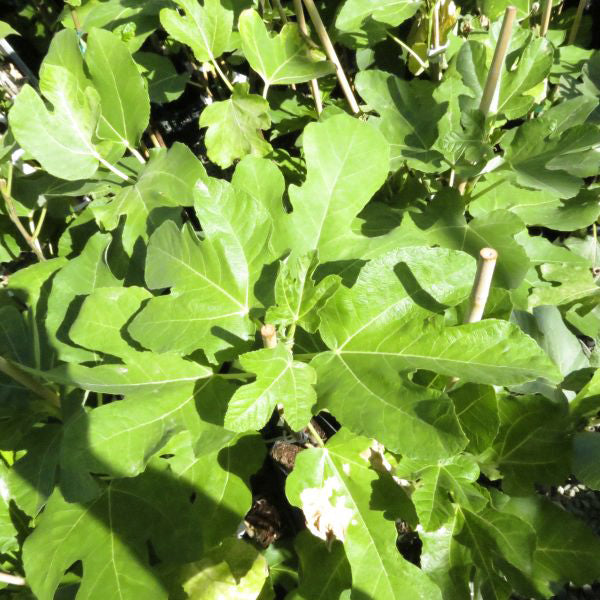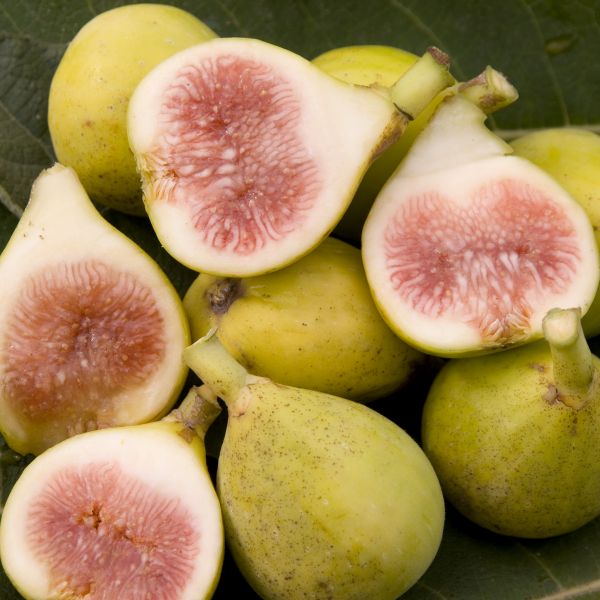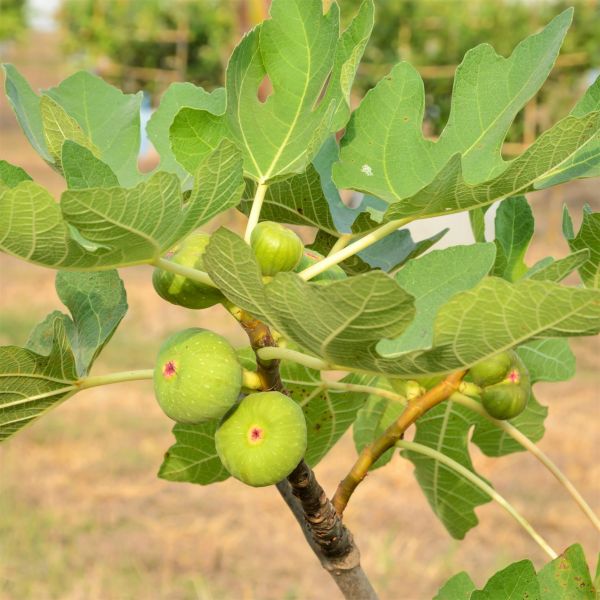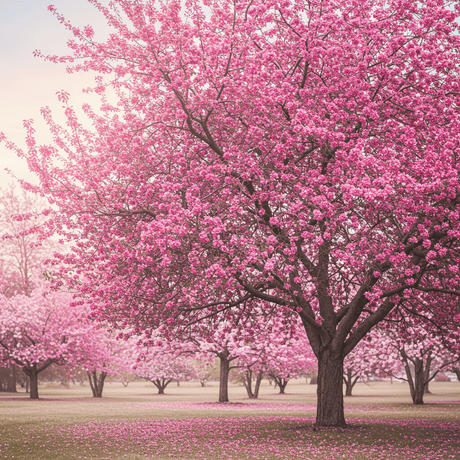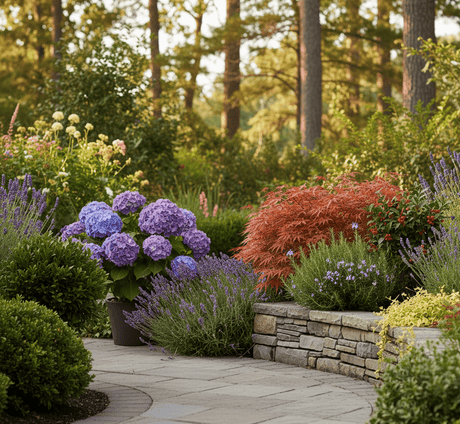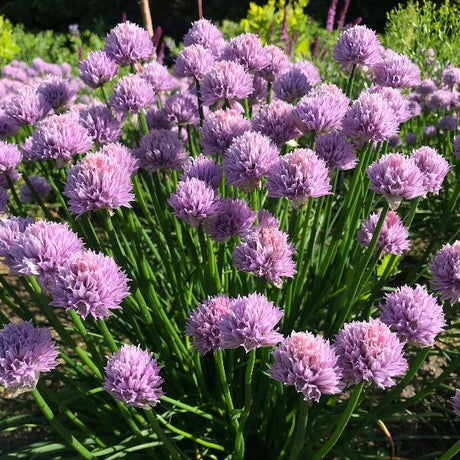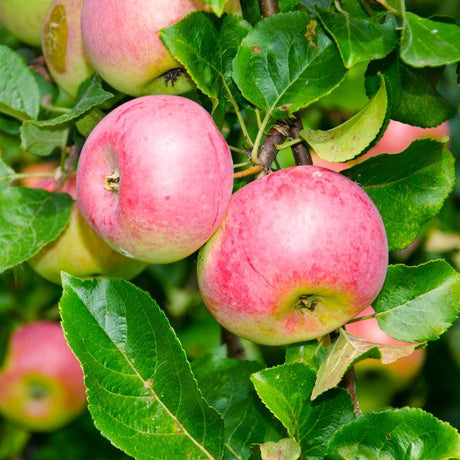Peter's Honey Fig Tree
Ficus carica 'Peter's Honey'
- Stay Protected with Plant Sentry ™
Peter's Honey Fig Tree is backordered and will ship as soon as it is back in stock.
Plant Sentry™
Plant Sentry™

Plant Sentry™ Protected
Your order is protected by our compliance system that:
- Prevents restricted plants from shipping to your state
- Ensures plants meet your state's agricultural requirements
- Protects gardens from invasive pests and diseases
Delivery and Shipping
Delivery and Shipping
Delivery and Shipping
Fast, Safe Plant Delivery
Ships in 3-4 business days • Tracking provided • Weather protected
| Under $50 | $9.99 |
| $50 - $99.99 | $14.99 |
| $100 - $149.99 | $16.99 |
| $150 - $198.99 | $24.99 |
| $199+ | FREE |
✓ Zone-specific timing • ✓ Professional packaging • ✓ Health guarantee
Understanding Plant Options
Nature Hills offers plants in two main formats:
- Container Plants: Grown in pots with soil, sized by container volume and plant age
- Bare Root Plants: Dormant plants without soil, sized by height measurements
Container Plant Sizes
Container sizes indicate plant age and growing capacity rather than liquid volume equivalents. Our containers follow industry-standard nursery "trade gallon" specifications, which differ from standard liquid gallon measurements.
Young Plants (6 months to 18 months old)
| Container Size | Actual Volume | Metric Equivalent |
|---|---|---|
| 2" x 2" x 3" | 0.18 - 0.21 dry quarts | 0.20 - 0.23 dry liters |
| 4" Container | 0.31 - 0.87 dry quarts | 0.35 - 0.96 dry liters |
| 4.5" Container | 0.65 dry quarts | 0.72 dry liters |
| 6" Container | 1.4 dry quarts | 1.59 dry liters |
| 1 Quart | 1 dry quart | 1.1 dry liters |
| 5.5" Container | 1.89 dry quarts | 2.08 dry liters |
Established Plants (18 months to 2.5 years old)
| Container Size | Actual Volume | Metric Equivalent |
|---|---|---|
| 2 Quart | 2 dry quarts | 2.2 dry liters |
| #1 Container | 2.26 - 3.73 dry quarts | 2.49 - 4.11 dry liters |
| 5" x 5" x 12" | 3.5 - 4.3 dry quarts | 3.85 - 4.74 dry liters |
Mature Plants (2-4 years old)
| Container Size | Actual Volume | Metric Equivalent |
|---|---|---|
| #2 Container | 1.19 - 1.76 dry gallons | 5.24 - 7.75 dry liters |
| #3 Container | 2.15 - 2.76 dry gallons | 8.14 - 12.16 dry liters |
Large Plants (3-5 years old)
| Container Size | Actual Volume | Metric Equivalent |
|---|---|---|
| #5 Container | 2.92 - 4.62 dry gallons | 12.86 - 20.35 dry liters |
| #6 Container | 5.25 - 6.01 dry gallons | 23.12 - 26.42 dry liters |
| #7 Container | 5.98 - 6.53 dry gallons | 26.34 - 28.76 dry liters |
Bare Root Plants
Bare root plants are sold by height from the root system to the top of the plant. Plants may exceed minimum height requirements.
Common Sizes:
- Trees: 1 foot, 2 feet, 3 feet, 4 feet, 5 feet, 6 feet
- Shrubs & Perennials: 1 foot, 18 inches, 2 feet
Important Notes
Container Volume Specifications
- Trade Gallon Standard: Our containers follow industry-standard "trade gallon" specifications established by the American National Standards Institute (ANSI Z60.1) for nursery stock
- Volume Variations: Actual soil volume may vary due to plant root systems and growing medium settlement
- Age Indicators: Container size primarily indicates plant age and maturity rather than liquid volume equivalents
Growing Conditions
- Plant size can vary based on variety and growing conditions
- Container size helps indicate plant maturity and establishment level
- Larger containers generally mean more established root systems and faster landscape establishment
Seasonal Availability
- Bare root plants are available seasonally when dormant
- Container plants are available throughout the growing season
- Specific varieties may have limited availability in certain sizes
Questions?
For questions about specific plant sizes or availability, please contact our plant experts who can help you choose the right size for your landscape needs.
Plant Highlights
Peter's Honey Fig Tree highlights at a glance!
-
Botanical Name
-
Brand
-
Growing Zones6, 7, 8, 9, 10
-
Growth RateModerate
-
Mature Height
-
Mature Width
-
Leaf Color
-
Pollinator FriendlyYes
-
Pollinator Required
-
Bloom PeriodEarly Spring
-
Harvest Time
Characteristics
Where To Plant
When To Prune
- Late Winter
Water & Moisture Needs
- Moderate
Sunlight Needs
Soil Needs
- Widely Adaptable
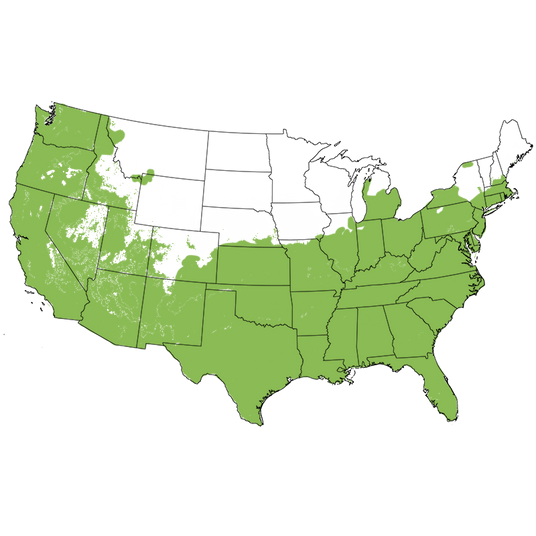
Growing Zones 6-10
The delightful Peter's Honey Fig produces very sweet, shiny, and high-quality fruit! Featuring a syrupy and honey-like flavor, Peter's Honey Fig Tree (Ficus carica 'Peter's Honey') is superb and will melt in your mouth!
These uniquely sweet, greenish-yellow fruit with dark-amber flesh, the first harvest ripens in May and produces a later crop in October-November. This breba Fig has a very small, closed-eye small to medium-sized fruit!
The beautiful, shiny lobed leaves put on a show all summer! Growing into a sizeable 15 - 25 feet in height and 12 - 15 feet wide, they can also be pruned easily to keep them at the right height for you. You can prune this into either a shrubby fruiting bush with its limbs low to the ground for easy harvesting, or 'limb it up' and expose the trunk and create a multi-branched umbrella-shaped canopy! Either way, you'll love the lush lobed foliage, soft texture, and delicious fruit this edible landscaping tree produces!
The size of this tree will vary with the climate where it is being grown. In warm climates, they grow larger. In-ground trees can be used as a marvelous backdrop along a fence line. In growing Zones 6 and 7, just cover it well, or bring your container into an unheated garage or shed to go dormant over the winter.
In USDA hardiness Zones 6 and 7, in-ground plants may die back to the ground each year. They'll become a shrubbier plant with new growth from the roots each year. Consider them a landscape shrub that needs winter protection.
Planting and Application:
These are delectable and indulgent fruit, perfect for fresh eating, drying and canning too! Desserts and sauces become divine with the honeyed, syrupy flavor imparted by Peter's Honey Fig!
Lovely edible ornamentals in their own right, these lend a tropical aesthetic to patios or garden beds, and front garden landscaping alike!
Use as a large shade tree over your garden beds, while also providing a gorgeous specimen tree for your front yard landscaping! Just be sure to plant it where you'll easily reach this indulgent harvest!
Adding an exotic, Mediterranean look to your formal and informal gardens, Peter's Honey Fig is a picturesque addition to your home! Prune smaller for use in pots and containers, or leave as a shrub for privacy that you and your wildlife can enjoy! This is one of the best trees to train as an Espalier for an incredible conversation piece.
Use as a shelterbelt, include in windbreaks, and plant in rows for privacy, screening and hedgerows or groups along your property line!
These attractive deciduous garden trees thrive in USDA zones 6 through 10. If a Fig is killed to the ground because of cold weather, it will come up with new growth when the weather warms up!
An excellent way for Figs to produce ripe fruit in colder climates is to plant your potted tree in the ground when the weather warms up, pot and all! Keep the rim a few inches above ground level. The roots grow through the drain holes of the pot in search of nutrients. When the leaves fall in late autumn, dig up the pot and store it inside your home, a greenhouse or an enclosed porch. Then replant again next spring!
- Light Greenish-Yellow Fruit With Soft Skin & Amber Flesh
- Melt-in-Your-Mouth Texture & Syrupy & Honeyed Flavor
- Beautifully Lobed Vibrant Green Foliage
- Vigorous & Productive Open-Eyed Fig
- Fresh Eating, Canning, Dried, Desserts
- Screening, Hedges, Specimens, Tree or Shrub Form
#ProPlantTips for Care:
It is easy to grow a Fig tree! With good cold tolerance, Figs require a warm location with a Southern exposure in order to ripen the fruit, especially in the maritime Northwest. In other words, it requires a sunny, hot exposure in cooler areas. Provide at least 6 hours of full, direct sun for best results, but those in the hottest of its climate range will find their tree appreciates a touch of afternoon shade to protect it from the summer sun and heat.
Tolerant of poor soil and alkaline conditions, you'll find your tree fruits best when planted in average to moderately fertile soil that is very well-drained. Water just enough to establish, then provide moderate moisture during the growing season. These are low-maintenance and easy-care plants, so sit back and enjoy the delectable fruit! All plants appreciate a thick layer of mulch over their root systems, and you'll appreciate the savings on your water bill. Pull mulch back 6 inches back from the trunk.
- Full Sun
- Well-Drained Enriched Soil
- Open Eye Variety
- Prune During Dormancy
- 100-200 Chill Hours
- Heat & Cold Tolerant - Great in Coastal Climates
Peter's Honey Fig Tree will delight you with tasty, unique fruit for years to come, but only if you hurry and order yours today at NatureHills.com!
Fig Tree FAQ
At what age do Peter's Honey Fig Trees bear fruit?
Nature Hills ships Fig trees with mature root systems that are already 2-3 years of age and the typical Fig tree will begin producing fruit at 3-5 years in optimal conditions.
Where is the best place to plant a Peter's Honey Fig tree?
Fig trees, like nearly all fruiting trees and shrubs, need enriched, well-drained soil in a full sun location to flower and fruit the best.
Are Fig Trees Self-Pollinating
Fig Trees are partially self-fruitful but do best with a pollination partner. Peter's Honey is a closed eyed-type of Fig and should have another similar Fig Tree planted nearby to maximize pollination chances.
What Shipping Options Do You Offer?
NatureHills.com works closely with our growers and nursery professionals to ensure we ship when it is most appropriate for your area. Our goal is to deliver the hardiest plants by avoiding extreme high and low temperatures. Check out our shipping schedule for more information and to learn our wills and won'ts when it comes to shipping plants. Find your Fig Trees for sale here at NatureHills.com!

